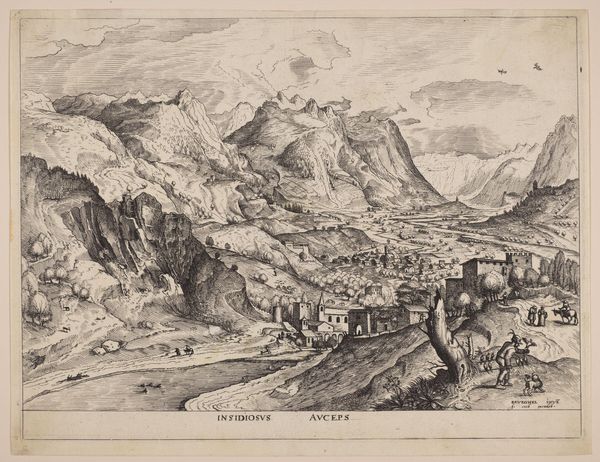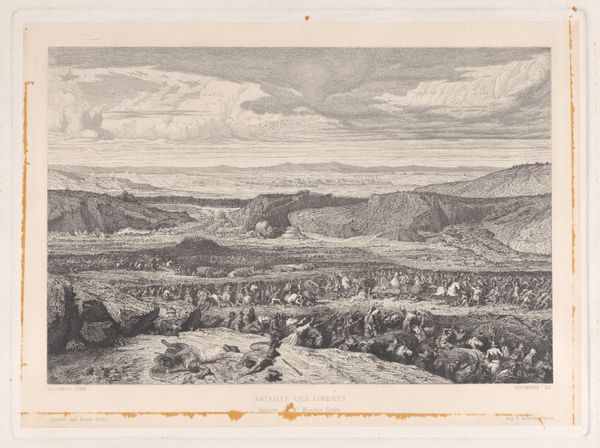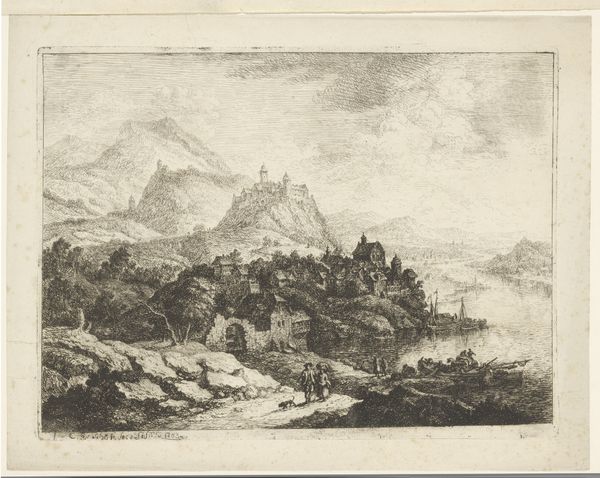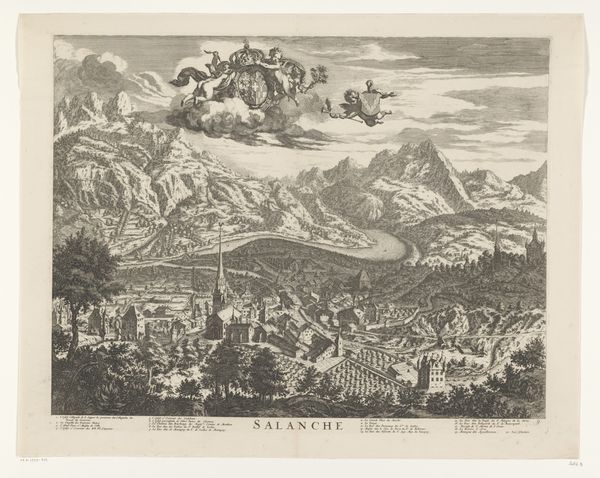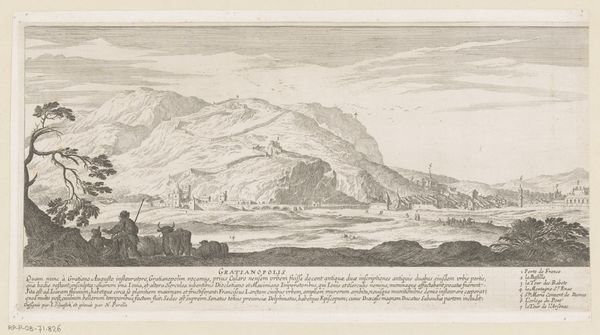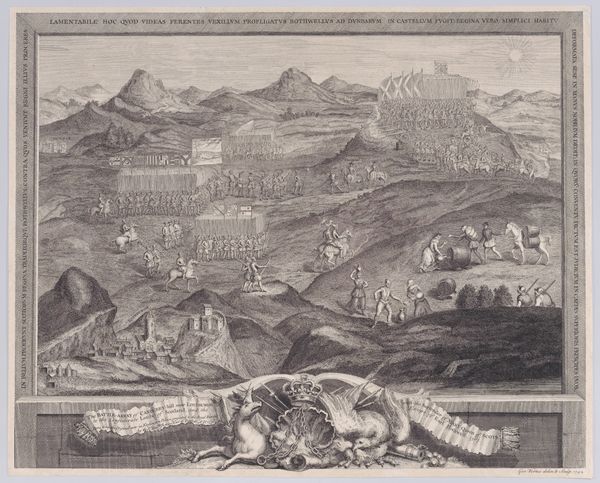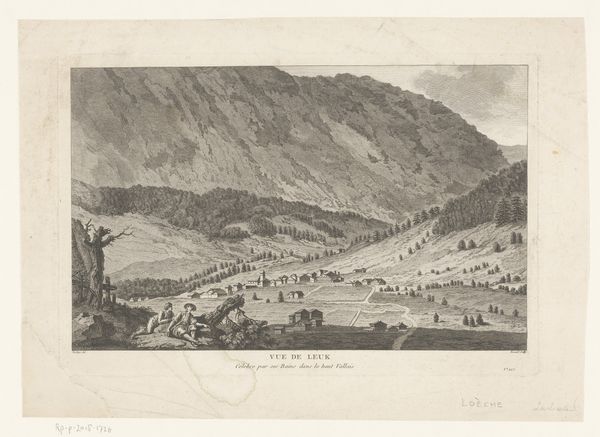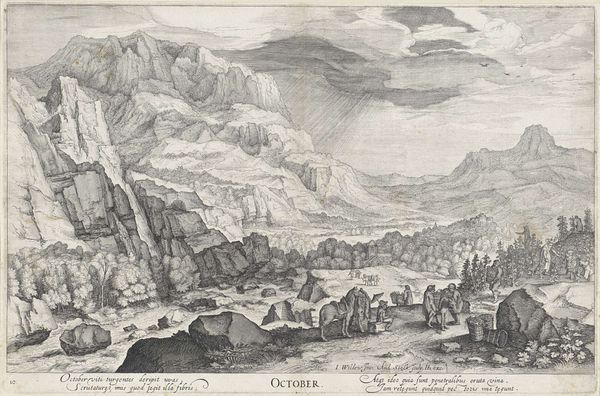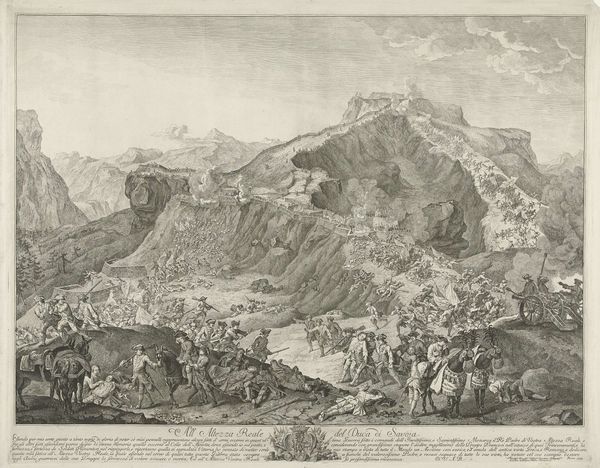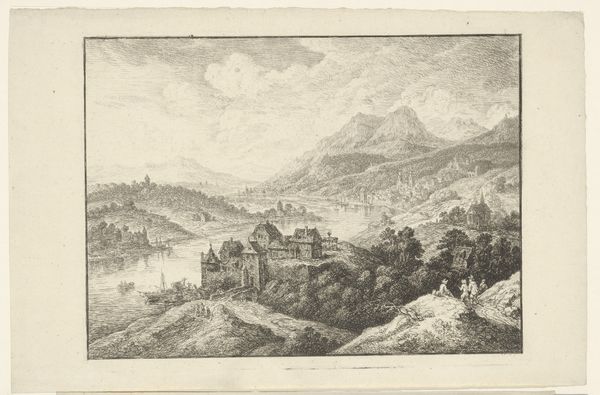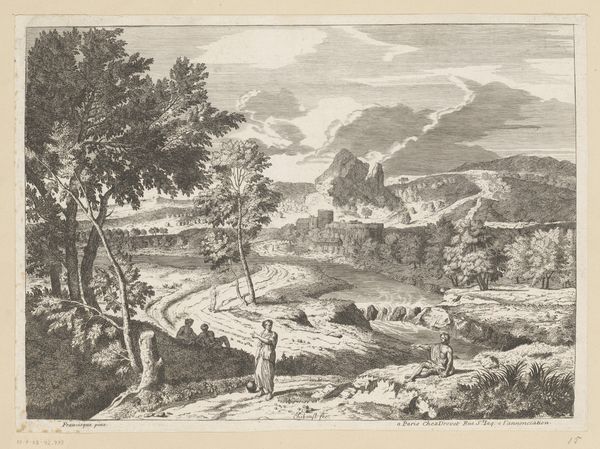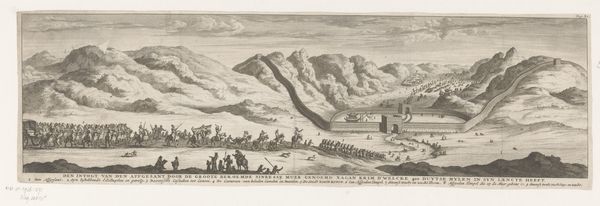
The Crafty Bird-Catcher (Insidiosus auceps) from The Large Landscapes 1550 - 1560
0:00
0:00
drawing, print, etching, engraving
#
drawing
# print
#
etching
#
landscape
#
northern-renaissance
#
engraving
Dimensions: Sheet: 13 3/4 x 18 in. (35 x 45.7 cm) Plate: 12 15/16 x 17 in. (32.8 x 43.2 cm)
Copyright: Public Domain
Curator: I find myself drawn into the immersive landscape depicted in "The Crafty Bird-Catcher (Insidiosus auceps)" a print dating from around 1550-1560 and attributed to Johannes van Doetecum I after a design by Pieter Bruegel the Elder. Editor: The intricacy is astonishing. The way the mountainous landscape dwarfs the tiny figures creates an immediate sense of humanity's smallness against nature's grandeur. And I immediately note the various printing techniques such as engraving, and etching that help give different tones in the print. Curator: Indeed, the title hints at a deeper social commentary, doesn't it? "Insidiosus auceps" can be interpreted as insidious deception. Consider the crafty bird-catcher as a symbol, perhaps representing those in positions of power who prey on the vulnerable. Bruegel often embedded moral lessons within his landscapes, using the scenery as a stage for human folly. Editor: And consider the paper it is printed on; during this time, paper itself would have been a commodity. Where was the mill, what were the working conditions, what kind of labor went into its production and how would the material reality shape our interpretation? Curator: Precisely! Think about the intersectional impact of religious persecution and the socio-economic disparities during the Northern Renaissance, a tumultuous period in Europe’s narrative that is so closely bound to the land. We must ask: Who could afford art and the leisure time to engage in the kind of pursuits Bruegel pictures? How is access stratified? Editor: By emphasizing this production we might better see the relationship to art production more generally—perhaps more attention could then be given to artisanal traditions rather than the individual artist genius. The social and historical moment offers itself in this singular item as a material form, so it helps the contemporary viewer connect to it. Curator: This artwork, through its title, composition, and likely, Bruegel's intention, holds a mirror to timeless questions of morality and power—questioning if we've advanced. It reminds us that the landscape of human interaction, like the natural world, can conceal hidden dangers and inequities. Editor: Focusing on its material conditions contextualizes "Crafty Bird-Catcher" inside of its time and allows it to endure materially into the future, revealing to contemporary viewers just how our perceptions can change by considering art as a cultural product that intersects at the crossroads of its specific moment and cultural impact.
Comments
No comments
Be the first to comment and join the conversation on the ultimate creative platform.
